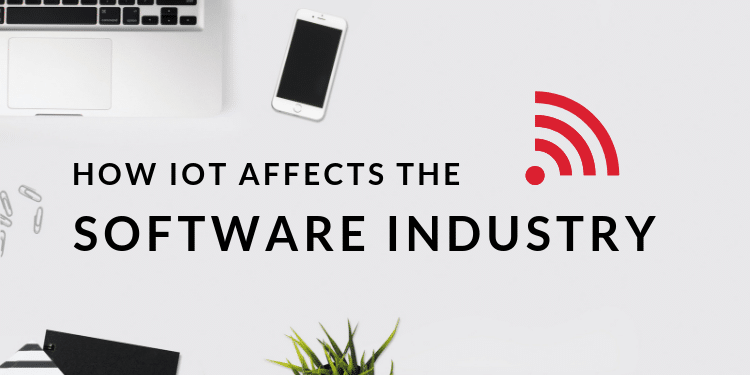Traditional software is operated by people and functions on desktop computers or on computers in data centers and more recently on mobile phones and tablets. The internet of things introduces a complex combination of hardware and software that must work together flawlessly in a wide variety of environments and in many cases with no human interaction. This variation and complexity put a significant strain on the skills of the Internet of Things Software Development team.
Cross-Platform Considerations
The internet today is largely decentralized. Many devices work together in concert for a variety of purposes. For example, edge computing uses the Internet of Things (IoT) devices as a means of more evenly distributing the computational load. To understand, consider cloud computing briefly.
Cloud computing networks multiple servers together. If one computer could process a terabyte of data in an hour, two could do it in thirty minutes, three could do it in fifteen, four could do it in seven and a half, five could do it in half that time, and as you increase available networked servers, the time continues to reduce until a terabyte can essentially be processed in real time.
Amazon has a cloud computing server array which puts more than a million servers to the task of creating a cloud array. But you don’t need that many to spread out the load of data processing. Many businesses use IoT devices as a means of facilitating what’s known as an “edge” network.
An edge network substitutes IoT tech for servers to the same effect or that of whatever a business using such solutions requires. This technique has expanded such that the web itself is, according to Wired.com, essentially decentralized. Accordingly, Internet of Things software development today seeks to keep pace with this trend.
Internet Of Things Companies
Internet of Thing software development companies must answer an increasing demand for decentralized solutions which have compatibility across the board. Smartphones, tablets, laptops, smart cars, smarthomes—there are many “smart” IoT devices. Not all of them have been designed with software or hardware that is in agreement.
Emulation applications make it possible for a smartphone to expand functionality. Here’s a simple example for those who grew up in the nineties: remember the Nintendo 64? This was a 64-bit Nintendo gaming system which was revered. Games cost $50+ and came in cartridge form. The system wasn’t backward compatible.
If you download an emulator program today, you can essentially play any game from that system right on your smartphone. Additionally, it’ll likely be free—depending on the game, of course. IoT software applications today often focus on solutions which make programming once only available on one system usable on a variety of media.
Accordingly, internet of things software developers are increasingly seeking to develop programs which facilitate cross-platform utility. But there are always bugs. Even the most well-designed program will have hidden errors in code, or coming from how that code interfaces with other programming languages. Beta testing is key, but that’s not enough.
Performance Monitoring Solutions
The performance of your program must be gauged continuously, and issues addressed as soon as they manifest. Cloud computing facilitates various design tools that provide solutions, and there are also APM options out there worth considering.
APM stands for Application Performance Monitoring. When it comes to that as seen in this source on application performance monitoring and alerting, AppOptics provides some exceptional solutions that can help you narrow down important metrics. Today, internet of things software development largely concerns applications and monitoring solutions.
Programs which gauge the effectiveness of other software necessarily have their own coding, and as a result, associated strengths and weaknesses. What this means is that varying startups are carving a notable niche in the market through the facilitation of IoT solutions. Some IoT software solutions pertain to interface between different devices and platforms, some IoT applications have to do with monitoring.
There are additionally organizational protocols and security solutions which have a root in the cloud, and help facilitate IoT options across the world. Other considerations for businesses either looking to branch into IoT, or more securely establish themselves, include a number of surprising trends.
Trends And Opportunity
Blockchain technology may become more relevant as cryptocurrency comes to dominate the market. Internet of Things software development teams are expected to consider security and connectivity simultaneously. IoT data has reached a level of integrity that has become vastly commercialized. One of the most important applications of IoT technology now involves manufacturing, which has some surprising modern innovation.
“Smart” manufacturing uses cloud computing and edge computing techniques as outlined earlier in this writing to help monitor and optimize production. For example, a given machine may be fitted with an IoT device at an operational “bottleneck”. Vehicles have “check engine” lights connected to an internal CPU. When something goes awry, a service indicator appears which helps a mechanic know what to fix.
IoT devices use similar technology in a way which allows those running manufacturing operations to maximize equipment utility, fixing problems before they knock a device out of commission, and helping regularly scheduled maintenance to become more efficient.
There’s a lot of software needs here, and many startups focused on facilitating them. Internet of Things software development will only get more complex as new ideas evolve. The industry is wide open, and likely to continue becoming more integral as technology advances. Stay tuned!
